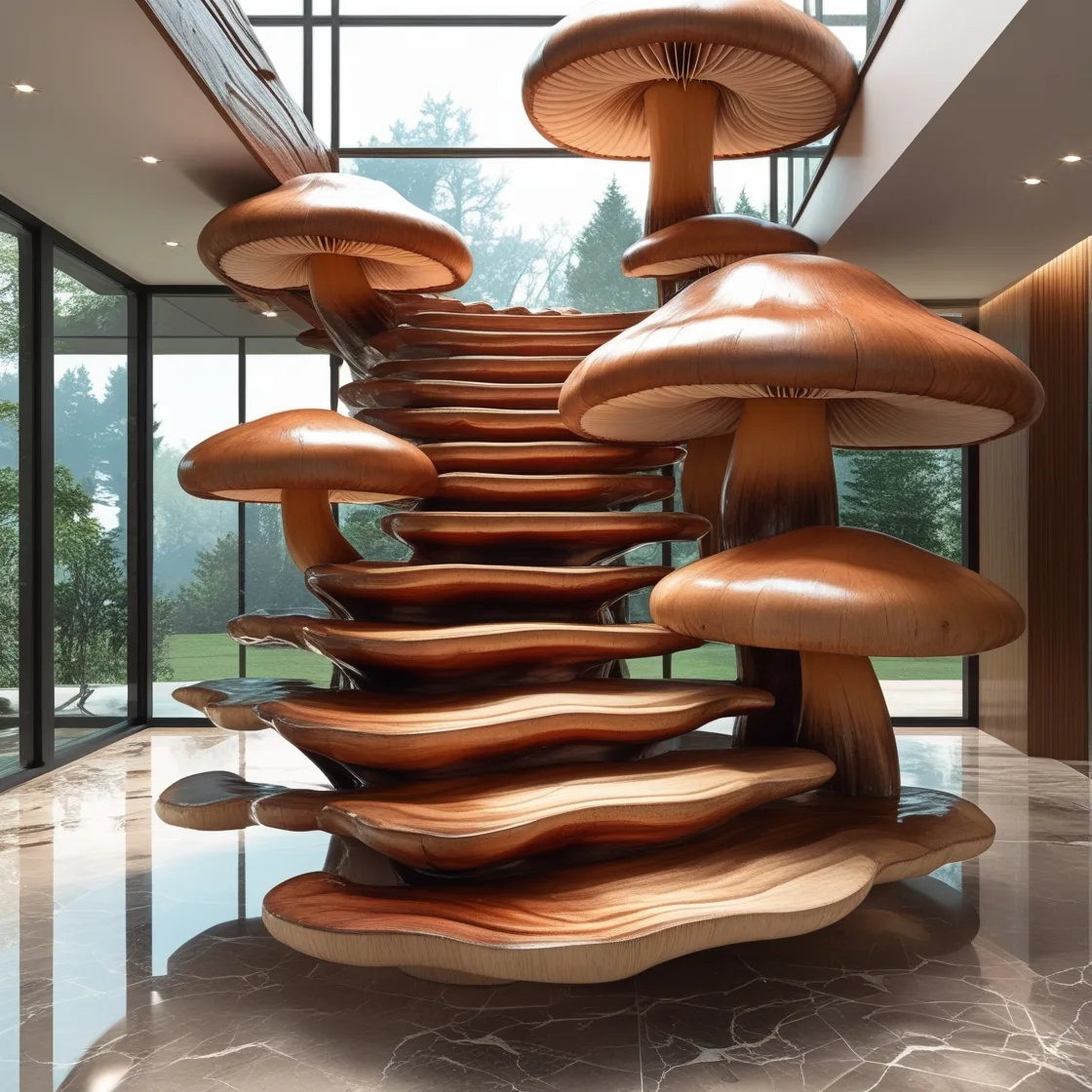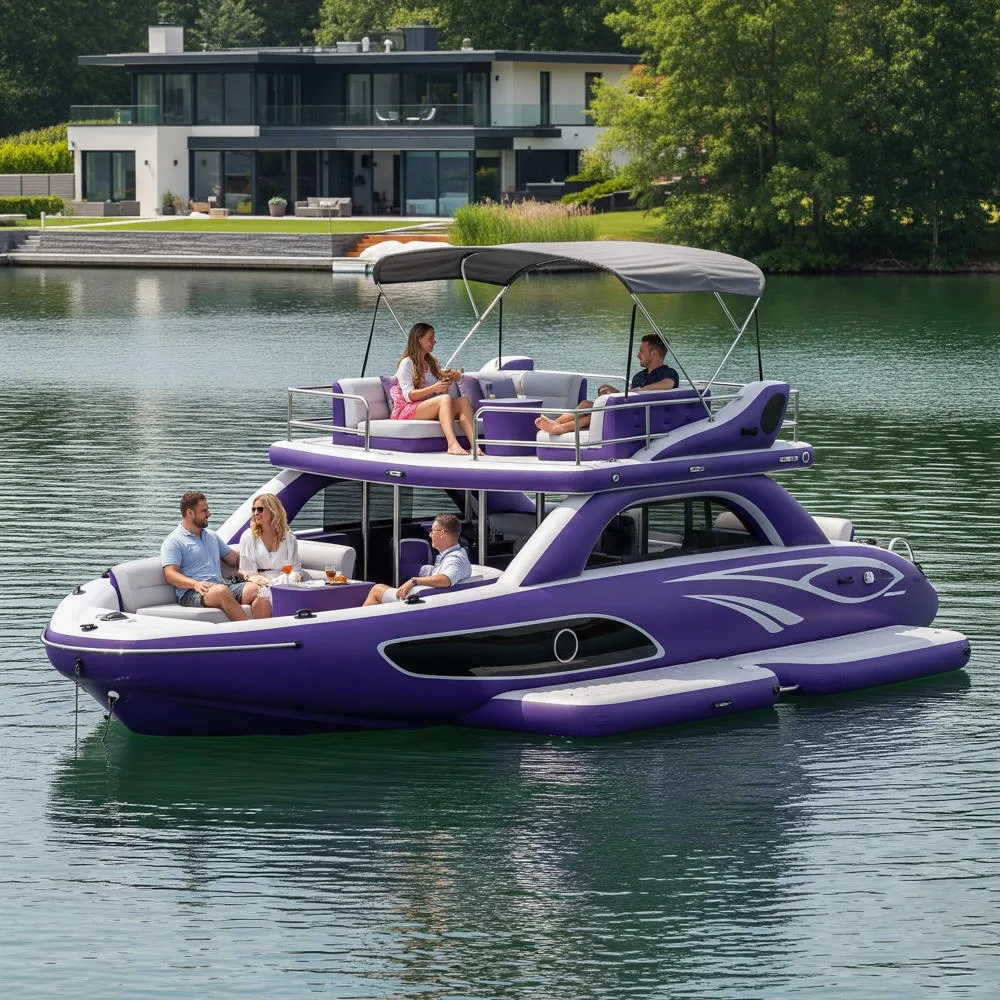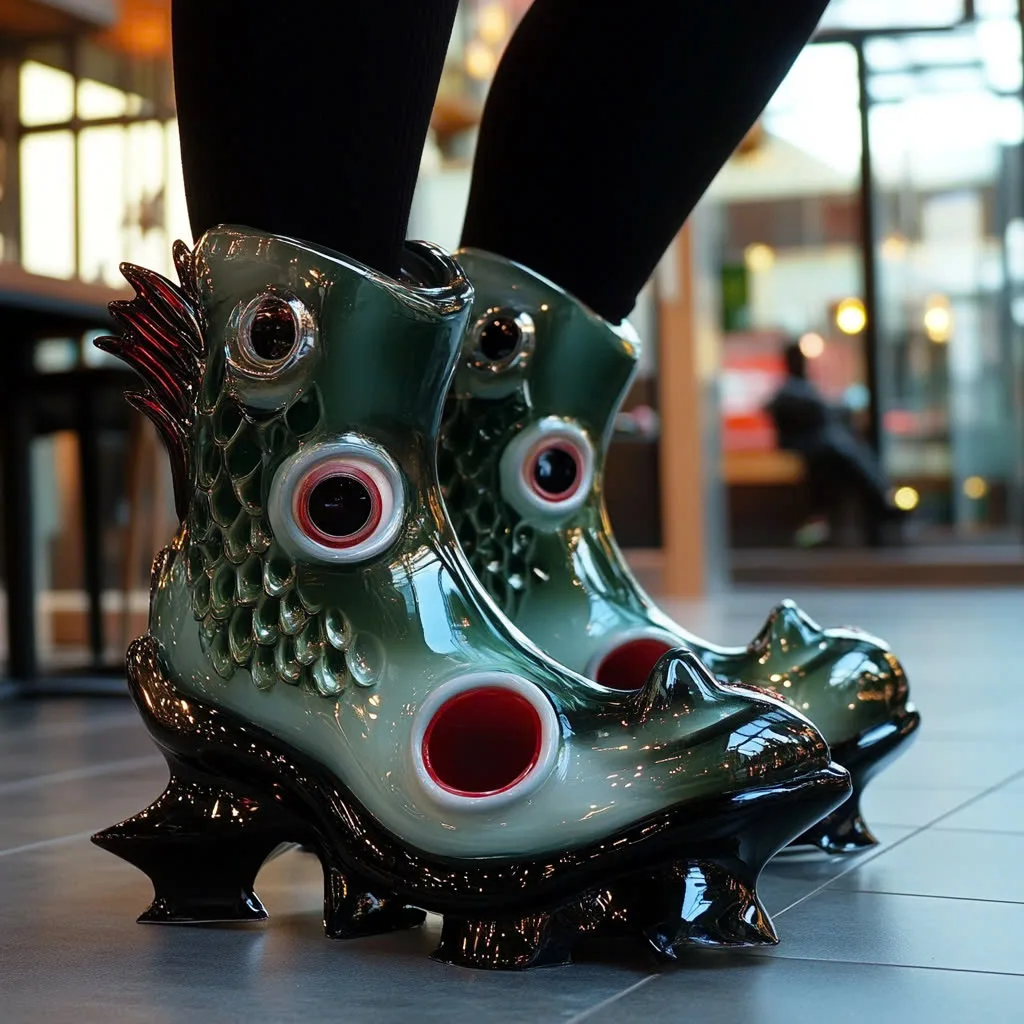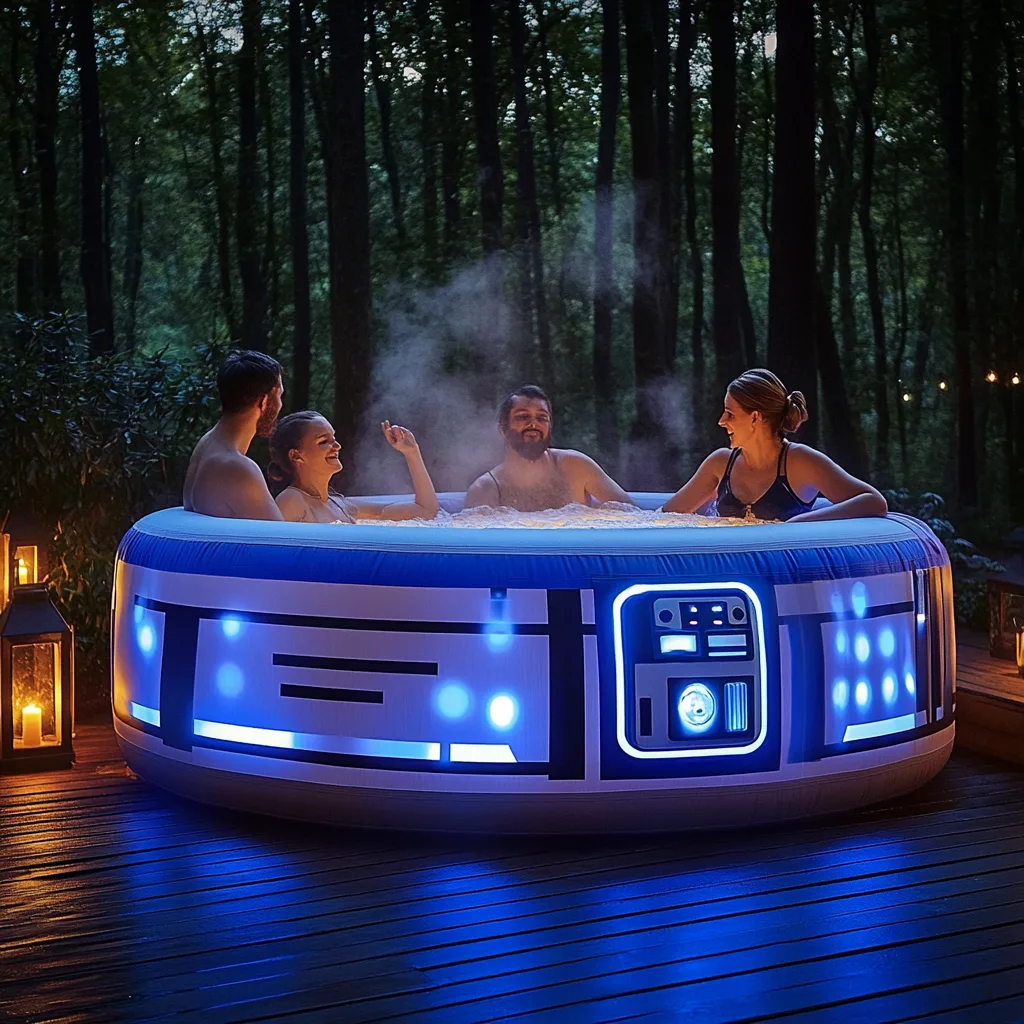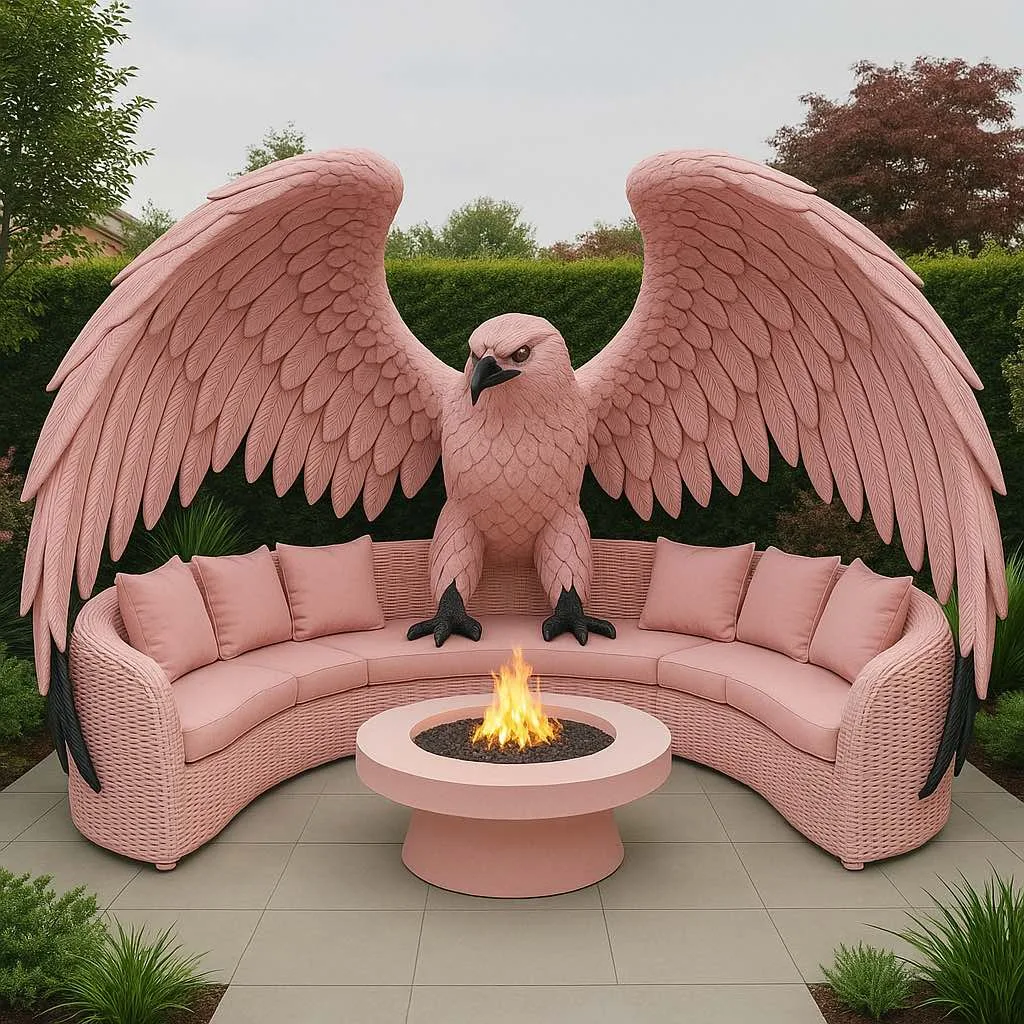In the world of design and architecture, innovation and imagination often intertwine to create masterpieces that transcend functionality. One such marvel is the Mushroom Staircase, a striking embodiment of nature-inspired design. These staircases are more than mere structures; they represent a harmonious blend of organic aesthetics and architectural ingenuity. With their whimsical curves and earthy tones, mushroom staircases have captured the attention of architects, interior designers, and nature enthusiasts alike. In this article, we delve into the enchanting world of mushroom staircases, exploring their origins, design philosophy, practical applications, and the profound impact they have on spaces and their inhabitants.
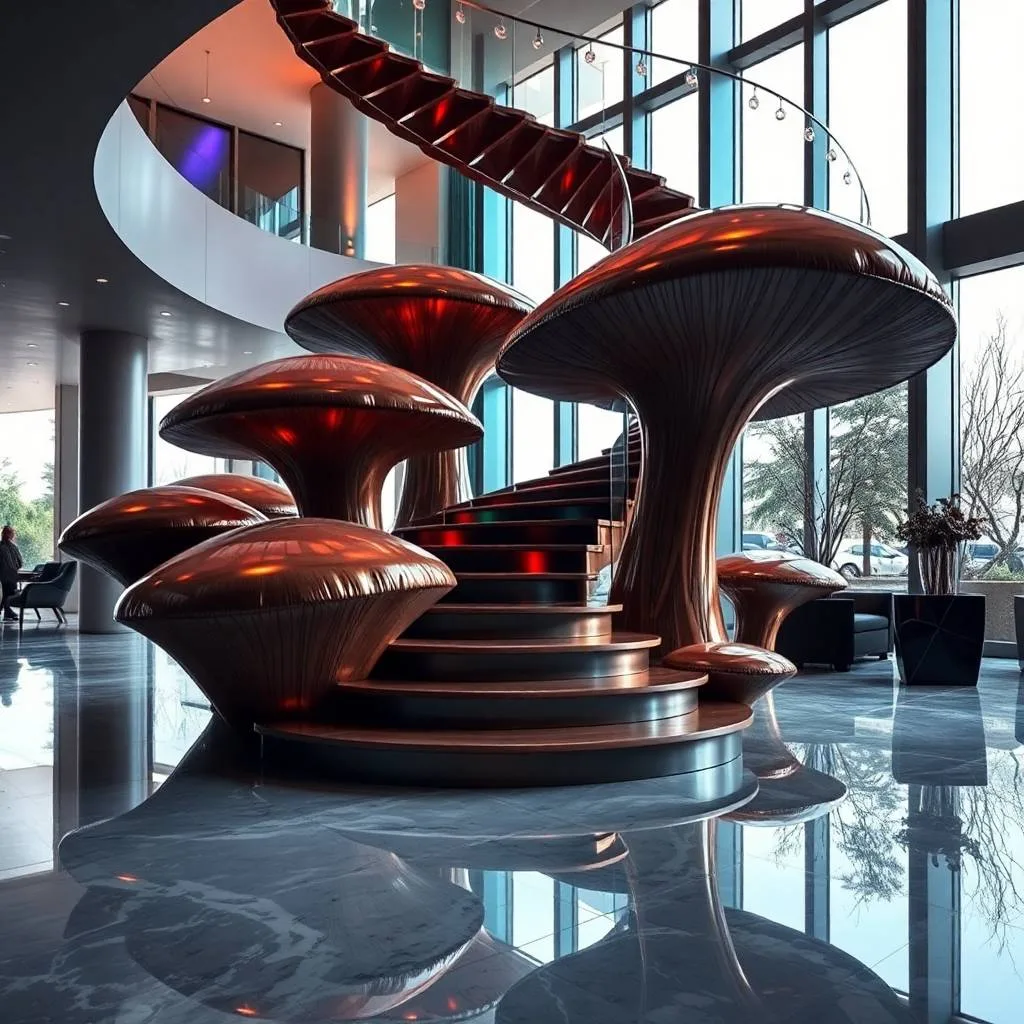
The Origins of the Mushroom Staircase Concept
The inspiration behind the mushroom staircase stems from the natural world, particularly the unique shapes and structures of mushrooms. Fungi have long fascinated humans with their intricate patterns, varied textures, and ecological significance. Architects and designers have drawn from this fascination to craft staircases that mimic the elegant forms of mushroom caps and stems.
This design concept first gained traction during the rise of organic architecture, a movement championed by visionaries like Frank Lloyd Wright. Organic architecture seeks to integrate structures seamlessly with their natural surroundings. The mushroom staircase embodies this philosophy, merging the whimsical beauty of mushrooms with the functional demands of modern living spaces.
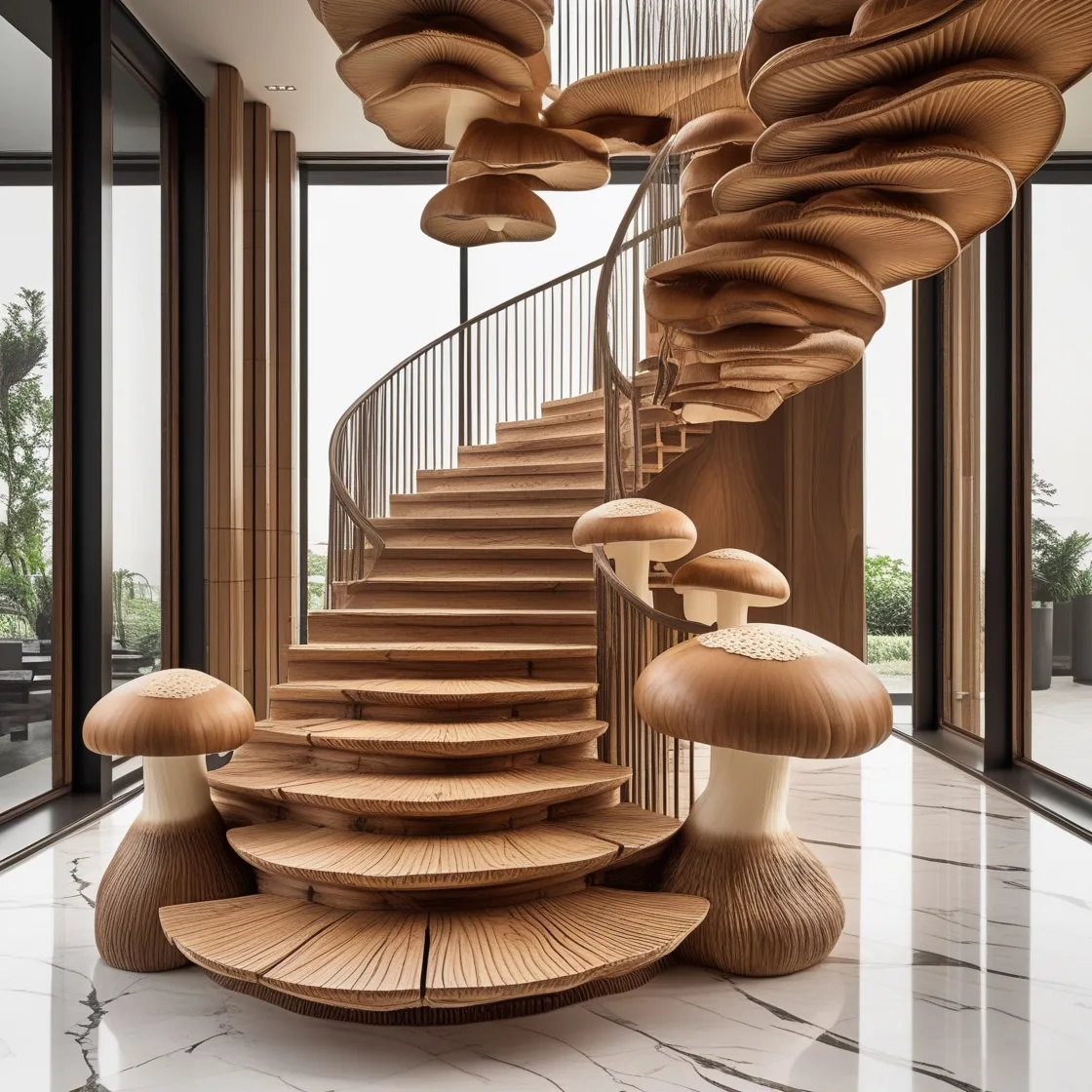
The Design Philosophy: Nature Meets Functionality
Biomimicry in Architecture
The mushroom staircase is a testament to biomimicry, the practice of drawing design inspiration from natural elements. The soft, rounded edges of mushroom caps and the slender, sturdy stems are reflected in the staircase’s flowing lines and robust support structures. This approach not only enhances the staircase’s aesthetic appeal but also ensures its structural integrity.
Embracing Whimsy and Elegance
One of the defining characteristics of mushroom staircases is their whimsical charm. The design often features spiral forms, mimicking the organic growth patterns of fungi. The result is a staircase that feels alive, as though it’s sprouting from the floor and reaching toward the ceiling. This playful elegance makes mushroom staircases a focal point in any setting, sparking curiosity and conversation.
Sustainability and Eco-Friendly Materials
The mushroom staircase often incorporates sustainable materials such as reclaimed wood, natural stone, and eco-friendly composites. By echoing the ecological role of mushrooms as decomposers and recyclers in nature, these staircases champion environmentally conscious design. This commitment to sustainability further cements their status as a celebration of the natural world.
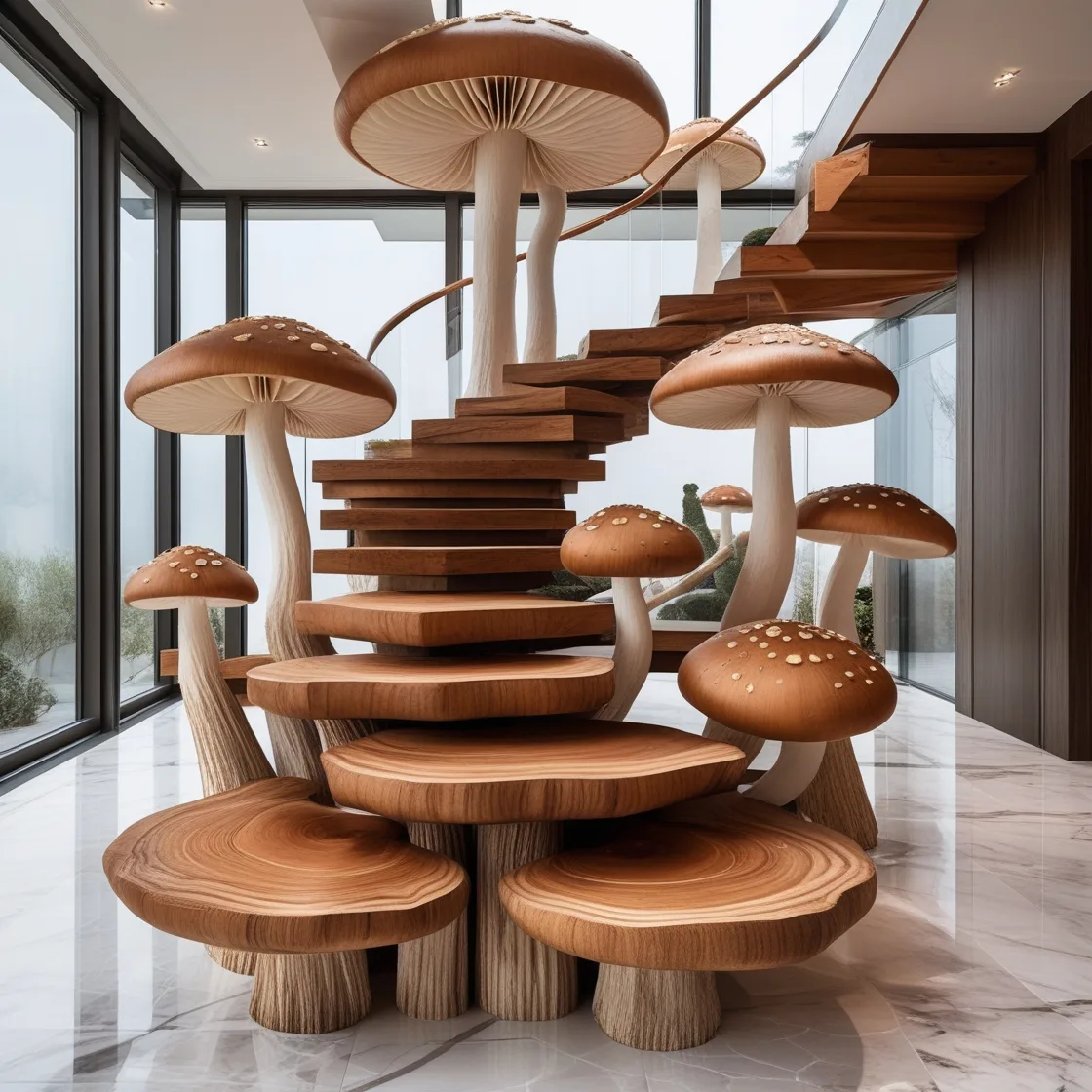
Practical Applications of Mushroom Staircases
Residential Spaces
In homes, mushroom staircases serve as functional art pieces. Their unique designs make them ideal for small spaces, where their spiral or compact forms can maximize functionality without sacrificing aesthetics. They’re particularly popular in loft apartments, tiny houses, and eco-friendly homes, where their natural inspiration complements minimalist and sustainable living.
Commercial Spaces
Restaurants, boutique hotels, and retail stores often incorporate mushroom staircases to create an unforgettable ambiance. Their enchanting designs can evoke a sense of wonder, drawing customers into the space and enhancing their experience. Imagine climbing a staircase that feels like stepping into a fairy tale – this emotional connection can leave a lasting impression on visitors.
Public Art Installations
Beyond practical applications, mushroom staircases are also celebrated as standalone works of art. They can be found in museums, botanical gardens, and urban parks, where they function as sculptural installations. These staircases invite interaction and exploration, encouraging people to engage with their surroundings in new and imaginative ways.
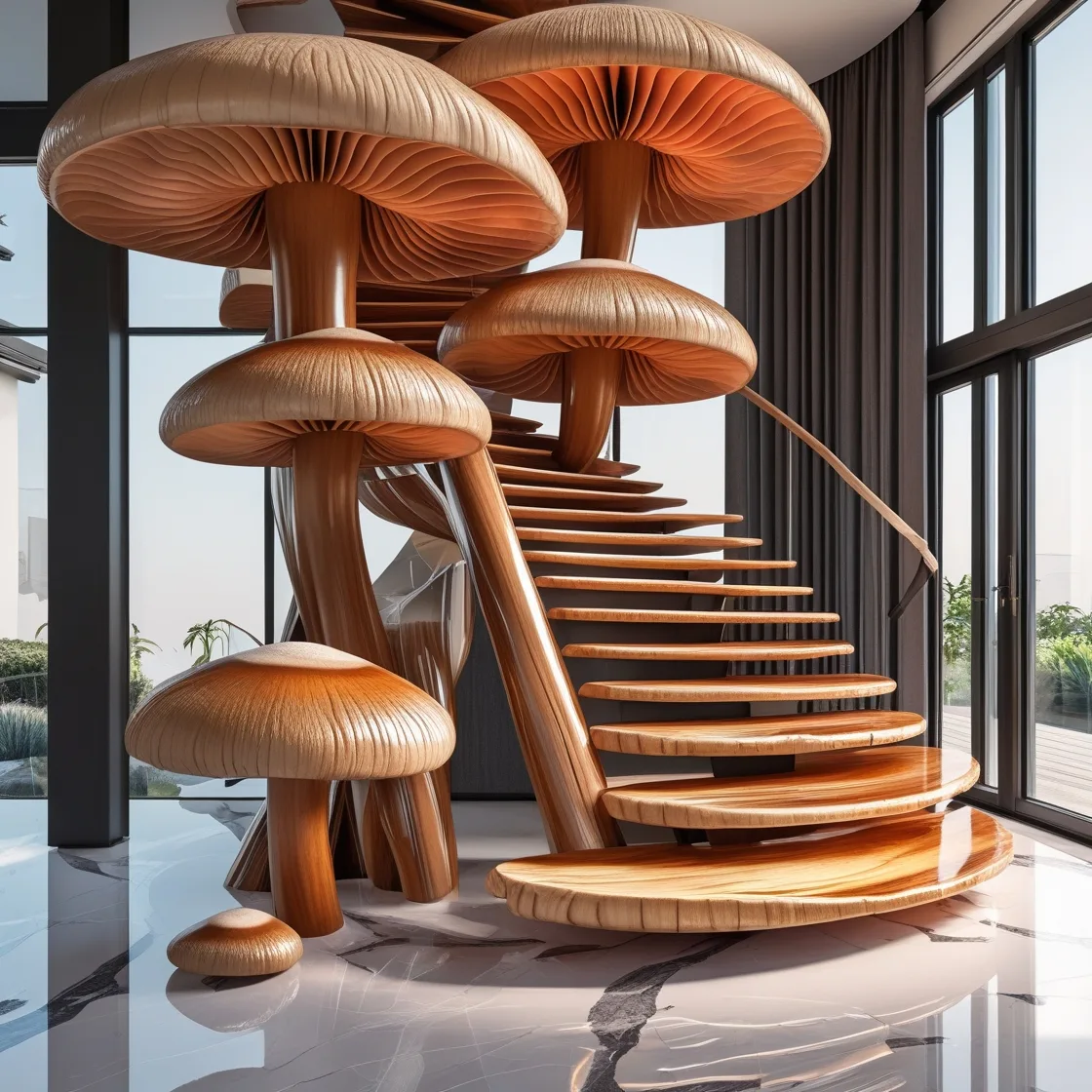
The Psychological and Emotional Impact of Mushroom Staircases
Creating a Connection to Nature
Incorporating elements of nature into built environments has been shown to reduce stress, improve focus, and enhance overall well-being. Mushroom staircases, with their organic shapes and natural materials, foster a deep connection to nature. They bring the tranquility and wonder of the outdoors into interior spaces, creating a soothing and inspiring atmosphere.
Fostering Creativity and Playfulness
The whimsical nature of mushroom staircases can spark creativity and a sense of playfulness. Their unconventional designs break away from the rigidity of traditional architecture, inviting people to think outside the box. This can be particularly beneficial in creative workspaces, schools, or homes with children, where imagination and innovation are encouraged.
Enhancing Spatial Harmony
The flowing, organic forms of mushroom staircases contribute to a sense of harmony and balance within a space. Their curves soften harsh angles, creating a more inviting and cohesive environment. This design principle aligns with the concept of biophilic design, which emphasizes the integration of natural elements to promote health and well-being.
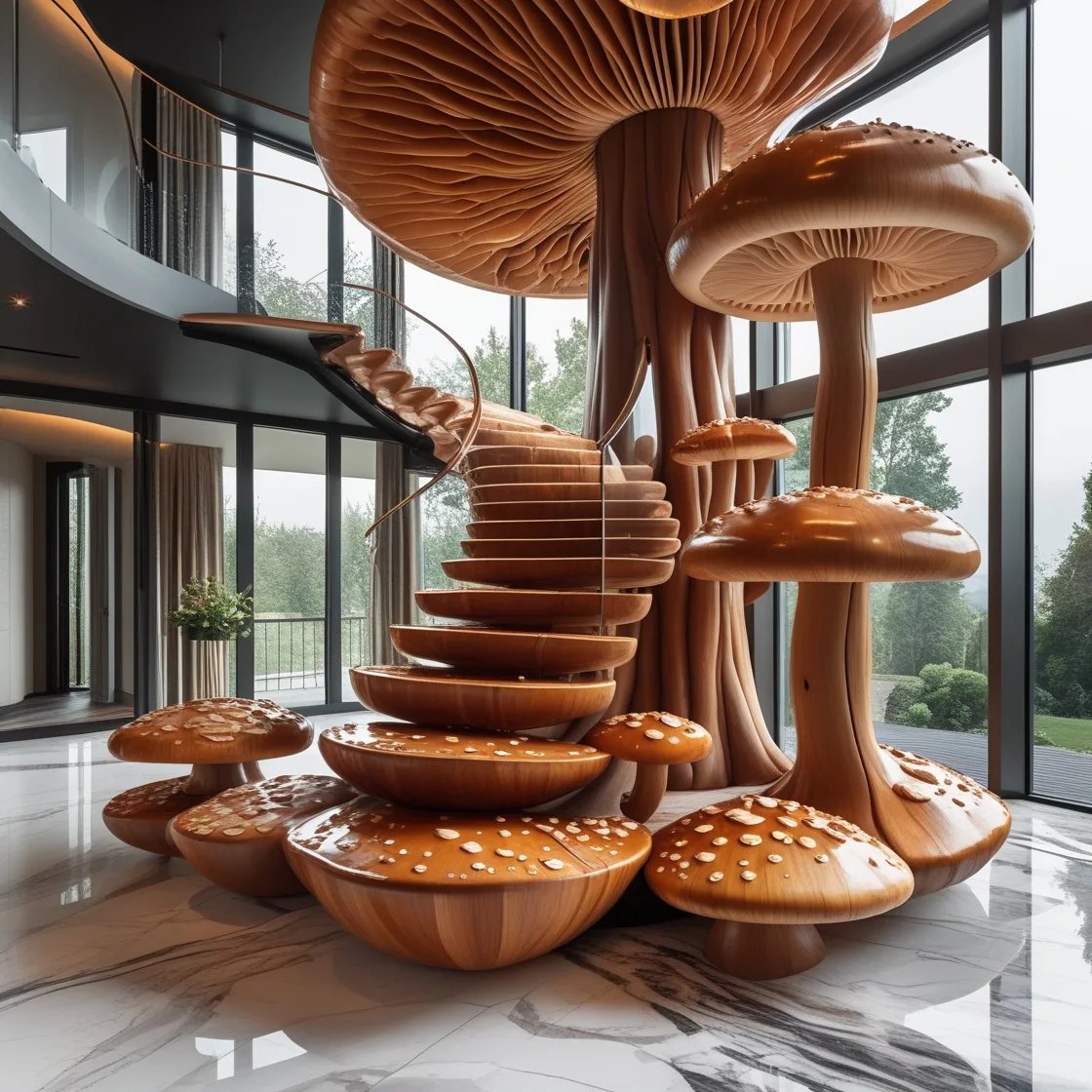
Iconic Examples of Mushroom Staircases
The Fairytale Retreat in Switzerland
Nestled in the Swiss Alps, this private residence features a stunning mushroom staircase crafted from locally sourced timber. The staircase spirals gracefully through the home, its form echoing the surrounding forest. The design seamlessly integrates with the home’s rustic yet modern aesthetic, creating a warm and inviting space.
The Enchanted Forest Café in Japan
This whimsical café features a central mushroom staircase that serves as both a functional element and an artistic centerpiece. The staircase’s design incorporates vibrant colors and intricate carvings, mimicking the appearance of wild mushrooms. Its playful design enhances the café’s magical ambiance, making it a popular destination for locals and tourists alike.
The Urban Oasis in New York City
In a bustling metropolitan environment, this urban oasis features a mushroom staircase constructed from steel and glass. The sleek, modern materials contrast with the organic form of the staircase, creating a striking visual juxtaposition. This innovative design demonstrates the versatility of the mushroom staircase concept in diverse architectural contexts.
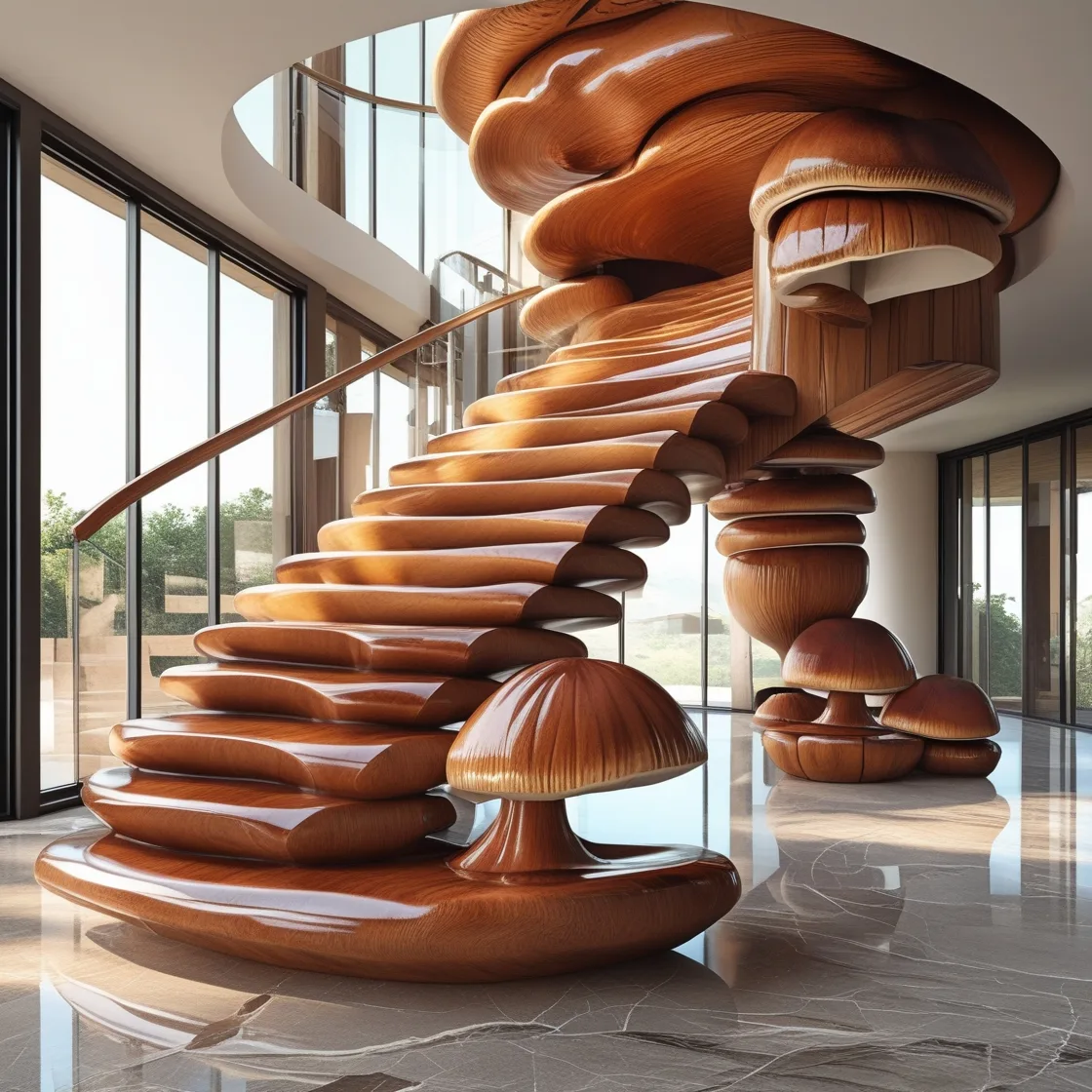
Crafting Your Own Mushroom Staircase
Choosing the Right Materials
Selecting materials that align with the overall aesthetic and purpose of the staircase is crucial. Reclaimed wood and natural stone create a rustic, earthy feel, while metal and glass can lend a contemporary edge. For a truly authentic touch, consider incorporating elements like moss or lichen-inspired textures.
Collaborating with Skilled Designers
Creating a mushroom staircase requires expertise in both structural engineering and artistic design. Collaborating with experienced architects and designers ensures that the final product is not only visually stunning but also safe and functional.
Customizing for Your Space
Each mushroom staircase is a unique creation, tailored to the specific needs and character of the space it inhabits. From compact spirals to sprawling, multi-tiered designs, the possibilities are endless. Work closely with your design team to bring your vision to life while optimizing functionality and aesthetics.
Conclusion
The Mushroom Staircase is more than a structural element; it is a celebration of nature’s beauty, a testament to human creativity, and a bridge between the organic and the architectural. Whether gracing a private home, a commercial space, or a public venue, these staircases inspire awe and foster a deep connection to the natural world. By integrating the whimsical charm of mushrooms into architectural design, mushroom staircases remind us of the endless possibilities that arise when we draw inspiration from the world around us.
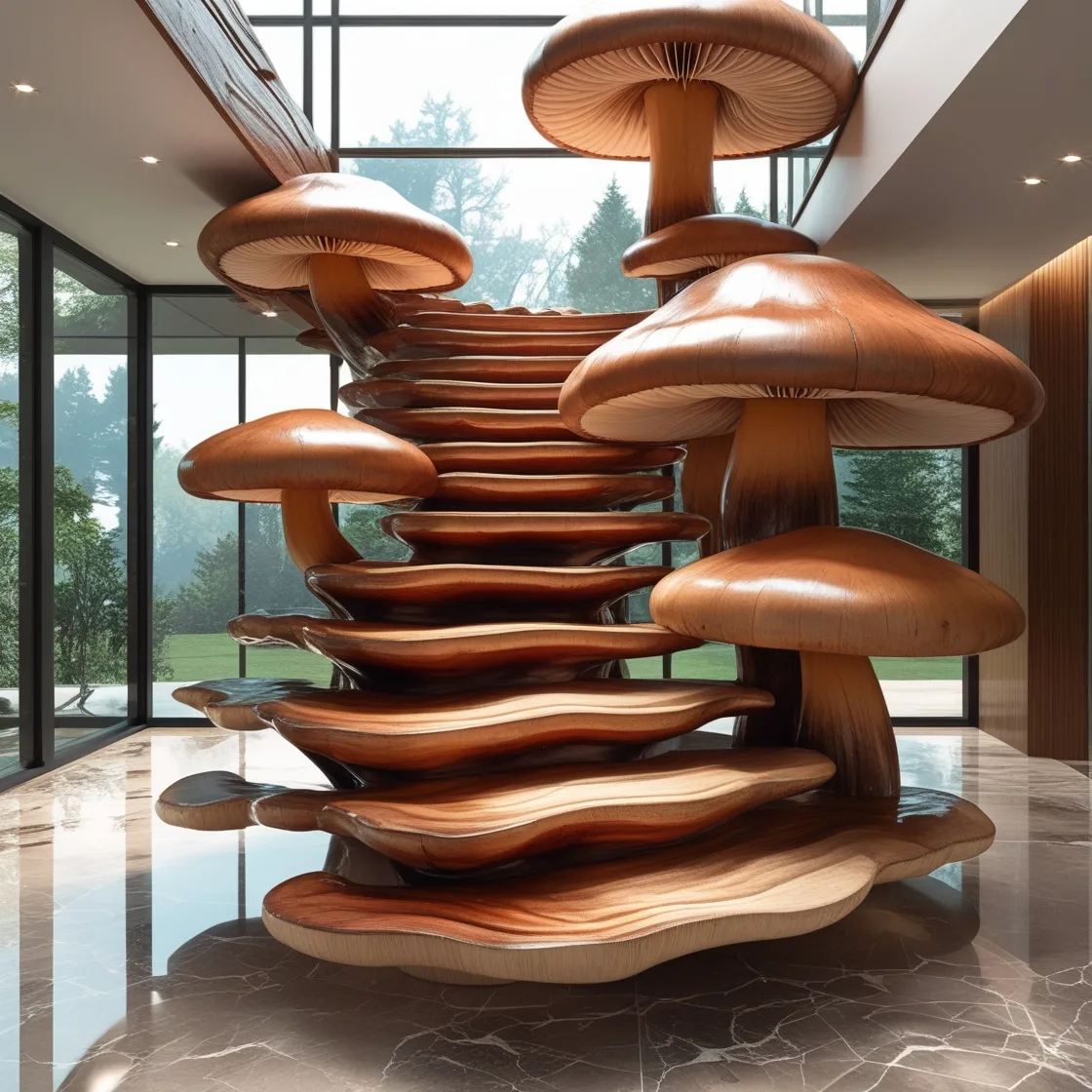
In a time when sustainability and harmony with nature are more important than ever, the mushroom staircase stands as a beacon of innovative and eco-conscious design. It invites us to reimagine the spaces we inhabit, encouraging us to infuse our lives with wonder, creativity, and a touch of the extraordinary.

